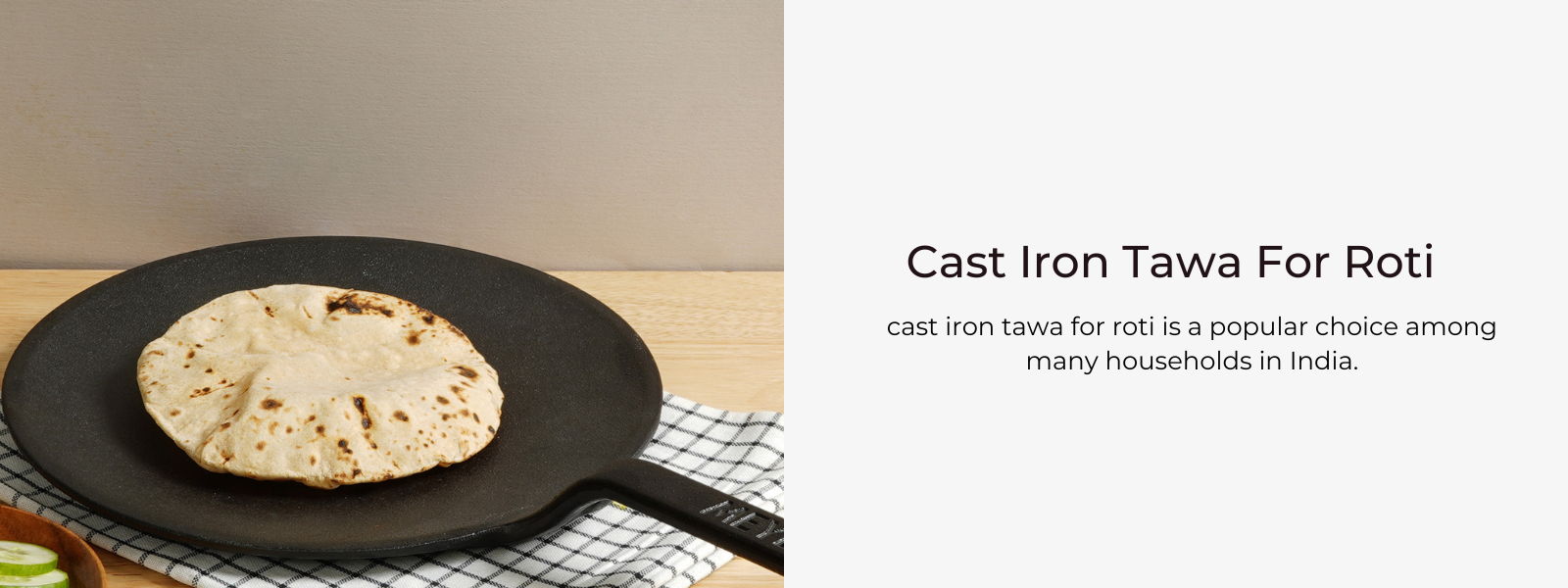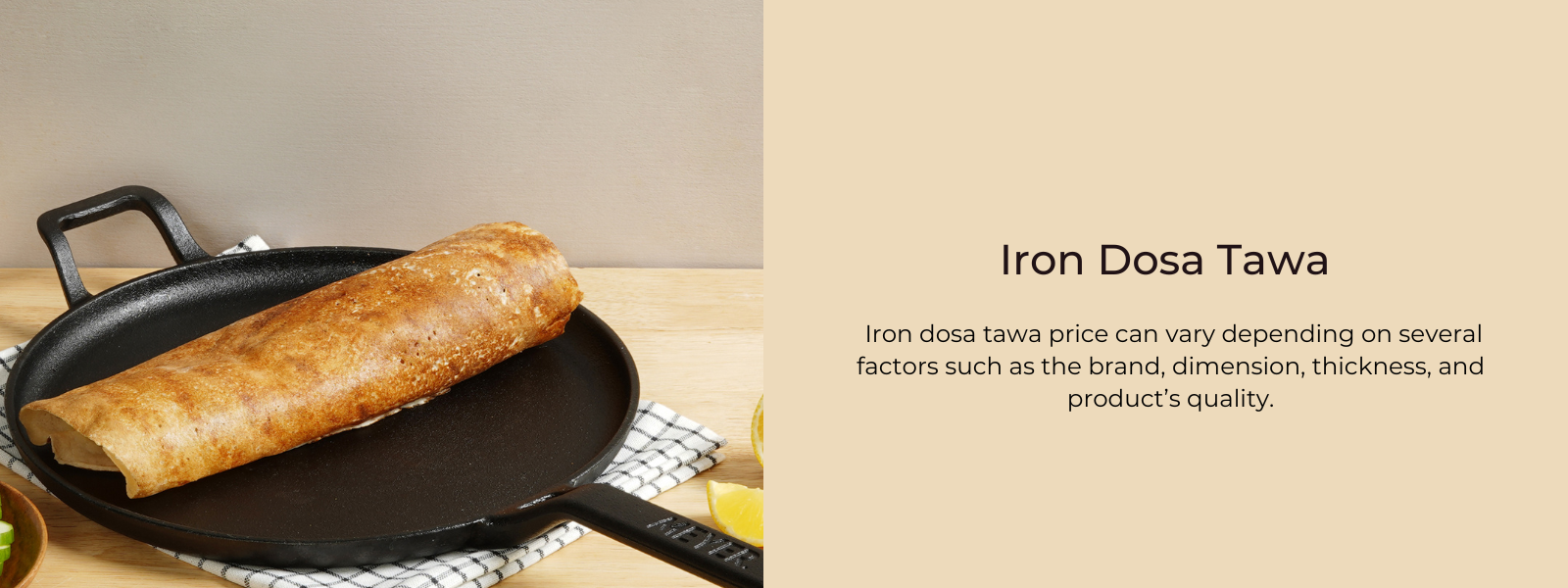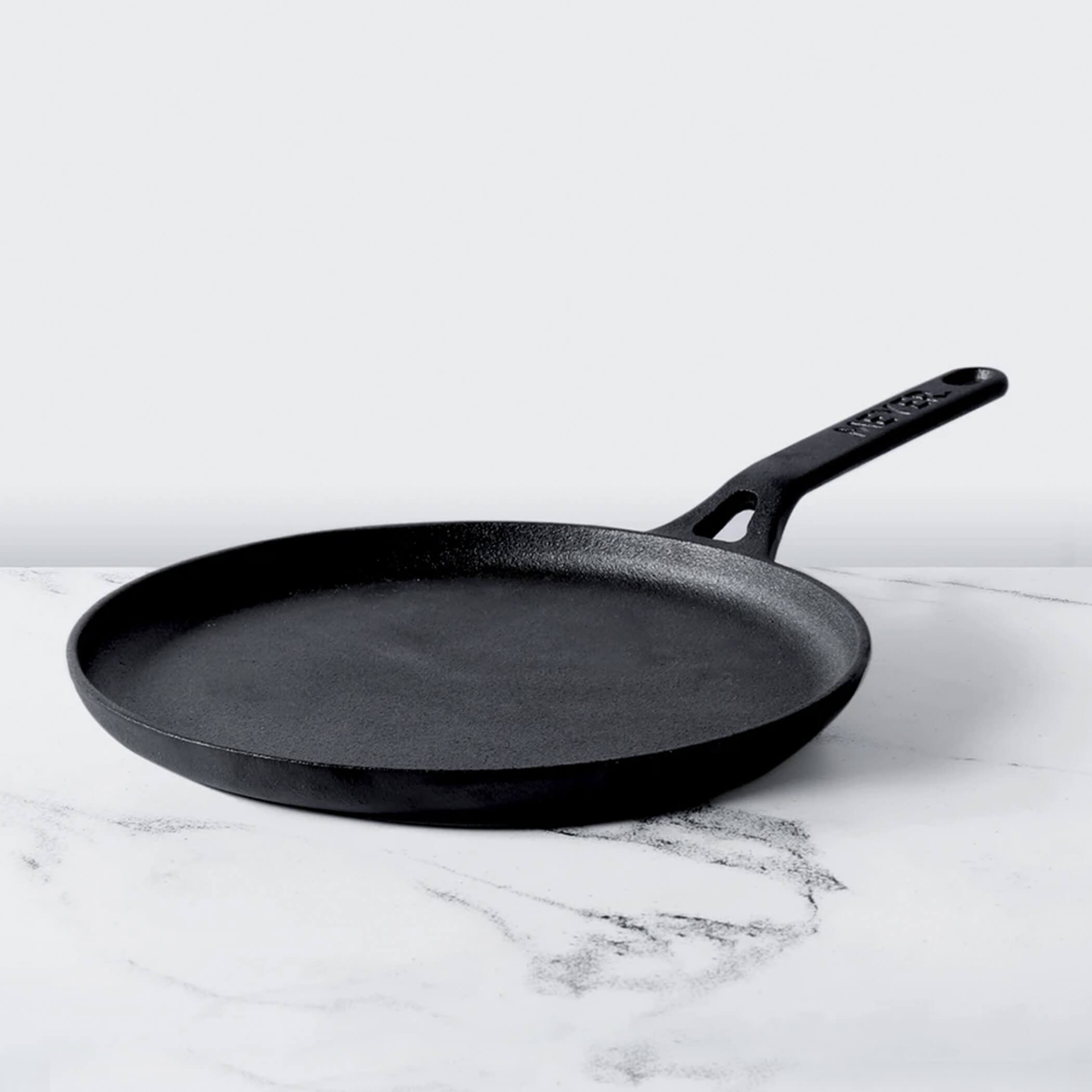If you’re a fan of South Indian cuisine, chances are you’ve dreamed of making those paper-thin, golden brown dosas or soft, flavorful uttapams right in your kitchen. The secret? A high-quality cast iron tawa. Unlike non-stick pans, a well-seasoned cast iron tawa brings the right amount of texture, heat retention, and authenticity to your dosa and uttapam game.
Let’s dive into exactly how to use one to get that signature crisp, using a trusted choice like the Meyer Pre-Seasoned Cast Iron Flat Dosa Tawa.
Table of Contents
- 1. Why Choose a Cast Iron Tawa for Dosas and Uttapams?
- 2. Key Benefits of a Cast Iron Tawa for Dosas and Uttapams
- 3. How to Use a Cast Iron Tawa for Dosas
- 4. How to Use a Cast Iron Tawa for Uttapams
- 5. Tips to Prevent Sticking on Cast Iron Tawa
- 6. Conclusion: Crispy, Authentic Dosas and Uttapams Start with the Right Tawa
Why Choose a Cast Iron Tawa for Dosas and Uttapams?
Using a cast iron tawa is a traditional method of making dosas, revered by home cooks and chefs alike. Its excellent heat retention, naturally non-stick surface (once seasoned), and ability to get very hot make it perfect for dosa and uttapam preparation.
The Meyer Pre-Seasoned Cast Iron Flat Dosa Tawa is ideal for this purpose with its 28 cm wide surface and flat base, allowing even spreading of the batter and effortless crisping.
Key Benefits of a Cast Iron Tawa for Dosas and Uttapams
1. High Heat Retention
Cast iron gets really hot and stays hot. That consistent heat is crucial for forming the crispy base of dosas and for cooking uttapams evenly without burning.
2. Naturally Non-Stick Surface
When properly seasoned, the surface resists sticking—no need for synthetic coatings. It allows your dosas to slide off smoothly once cooked.
3. Traditional Flavour and Texture
Cast iron imparts an earthy, slightly smoky flavor that’s hard to replicate. Plus, it helps achieve that lacy crispness on dosas that non-stick pans just can’t match.
How to Use a Cast Iron Tawa for Dosas
Prepare the Batter
- Use a well-fermented dosa batter (a mix of rice and urad dal soaked, ground, and fermented for 8–12 hours).
- For crisper dosas, add a little poha (flattened rice) or methi seeds while grinding.
Heat the Tawa
- Place your Meyer Cast Iron Tawa on medium-high flame and let it heat up evenly for 3–5 minutes.
- Sprinkle some water; it should sizzle and evaporate immediately, indicating it's ready.
Condition the Surface
- Lightly rub the tawa with a cut onion dipped in oil. This helps prevent sticking and adds flavor.
- Do not use too much oil—it can prevent batter from spreading evenly.
Pour and Spread the Batter
- Reduce the flame to medium. Pour a ladleful of batter onto the center of the tawa.
- Using the bottom of the ladle, spread the batter outward in a circular motion to form a thin dosa.
Drizzle Oil and Cook
- Drizzle a few drops of oil around the edges.
- Let it cook until the bottom is golden brown and the edges start lifting.
Serve or Flip
- For plain dosas, fold and serve once crisp.
- For masala dosas, place the filling in the center and fold.
- No need to flip unless you’re making a thick dosa like set dosa.
How to Use a Cast Iron Tawa for Uttapams
Use Thicker Batter
-
Use the same dosa batter, but do not spread it. Just pour it in the center and let it spread naturally to a thick pancake.
Add Toppings
- Add finely chopped onions, tomatoes, green chilies, coriander, and any veggies of your choice on top.
- Gently press the toppings into the batter.
Cook on Low Heat
- Cover the uttapam and let it cook on low to medium heat so the inside cooks through.
- Once the base is browned, flip and cook the other side.
Tips to Prevent Sticking on Cast Iron Tawa
-
Ensure the tawa is well-seasoned. If batter sticks, re-season the tawa with oil.
-
Never pour batter on a cold tawa. Heat is essential for proper texture and release.
-
If food keeps sticking, rub the tawa with half an onion before each dosa.
Cleaning and Maintaining Your Cast Iron Tawa
-
Let it cool slightly before washing.
-
Use warm water and a soft scrubber—avoid soap.
-
Dry completely and apply a thin coat of oil before storing to maintain seasoning and prevent rust.
Conclusion: Crispy, Authentic Dosas and Uttapams Start with the Right Tawa
Whether you're aiming for paper-thin dosas or thick, veggie-loaded uttapams, the Meyer Pre-Seasoned Cast Iron Flat Dosa Tawa provides the traditional feel and functionality you need. Its superb heat retention, flat surface, and durable construction make it a must-have for dosa lovers. Once you’ve mastered using it, you’ll never go back to non-stick alternatives.
So go ahead, heat up your cast iron tawa, and bring the taste of South India to your kitchen with ease and authenticity.











Leave a comment